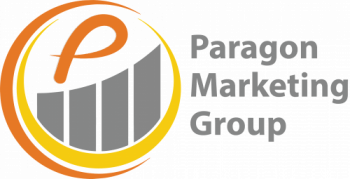Picture this: a potential client discovers your business through a LinkedIn post, visits your website, reads your blog, and receives your email newsletter—all before making their first purchase. Each customer touch point weaves together to create their perception of your brand. At Paragon Marketing Group, we understand these moments of connection are crucial building blocks that drive business growth.
In this post, we’ll cover the difference between touch points and marketing channels, the customer’s journey, common touch points, the value of every interaction, and building your brand through touch points.
Understanding Touch Points vs. Marketing Channels
Marketing channels are the platforms or methods you use to reach your audience, such as email marketing, social media, or direct mail. Touch points, however, are the actual moments of interaction that occur within these channels. For example, while email is a marketing channel, a customer opening and reading your newsletter is a customer touch point.
Key Takeaway: Marketing channels provide the framework, but touch points create the actual connection with your audience.
Common Customer Touch Points
Now that you know the difference between marketing channels and touch points, it’s time to determine which touch points your customers are using to interact with you. Your business likely engages with customers through various touch points, such as these::
- Website visits and blog content
- Social media interactions
- Email newsletters and campaigns
- Direct mail materials
- Customer service calls
- Online advertisements
- Customer reviews on Google
- In-person interactions
Key Takeaway: To create a cohesive brand experience, you need to maintain consistency across all your touch points.
The Journey Through Touch Points
Touch points occur across several key stages:
- Awareness: When customers first discover your brand.
- Consideration: As they research and compare options.
- Decision: When they’re ready to make a purchase.
- Post-purchase: Throughout their experience using your product or service.
- Loyalty: During ongoing engagement and repeat purchases.
Key Takeaway: Each stage of the customer journey presents unique opportunities for meaningful engagement.
The Value of Every Interaction
Not every customer touch point leads directly to a sale, but each one contributes to your brand’s story. Research shows that customers typically need at least 8 touch points on average before making a purchase decision. Each interaction builds familiarity, trust, and brand recognition.
For example, a prospect might search for a service on Google. Then, she may click on your website and read about your business. Before making a decision, she decides to look up your reviews on Google to see what other people think. She may even visit one or multiple of your business’s social media pages to see how up-to-date your brand is. Do people interact with the posts? Is the information current or outdated? She may decide to subscribe to your newsletter and think about what she really wants to do before making a purchasing decision.
Time goes by. Finally, the prospect is retargeted by a Facebook ad or maybe sees an ad on Hulu and is reminded of your business. She may receive another email or even click on an Instagram post before eventually deciding your business is right for her.
While the prospect needed several touch points before deciding to make a purchase, each touch point did not end with a sale. Rather, each touch point provided value by building familiarity and trust with the brand before the prospect finally chose to move forward.
Key Takeaway: Patient, consistent engagement across multiple touch points creates a strong foundation for future sales.
Building Your Brand Through Touch Points
Every touch point is an opportunity to demonstrate your brand’s values and expertise. At Paragon Marketing Group, we help businesses create meaningful interactions through various touch points, including:
- Engaging social media content
- Relevant online business listings
- Informative blog posts
- Strategic email campaigns
- Targeted direct mail
- Professional podcast production
- Effective online advertising
- Media purchases and OTT advertising
Key Takeaway: Strategic customer touch points help create a memorable brand identity that resonates with your target audience.
Here’s a Quick Recap:
- Customer touch points create real connections within marketing channels.
- Consistency across touch points builds a cohesive brand experience.
- Different stages of the customer journey require different types of engagement.
- Multiple touch points work together to drive purchasing decisions.
- Every interaction contributes to your brand’s story and reputation.
In an increasingly competitive marketplace, every touch point counts. As a full-service marketing group, Paragon Marketing Group combines digital and traditional solutions to create meaningful customer interactions across all channels. We understand there’s no “one size fits all” approach to marketing, which is why we customize our touch point strategy to meet your specific business needs and goals.
Ready to strengthen your customer touch points? Please visit our website at paragonmarketinggroup.com or call us at 262-443-9092 to start developing a comprehensive marketing strategy that makes every interaction count.
















